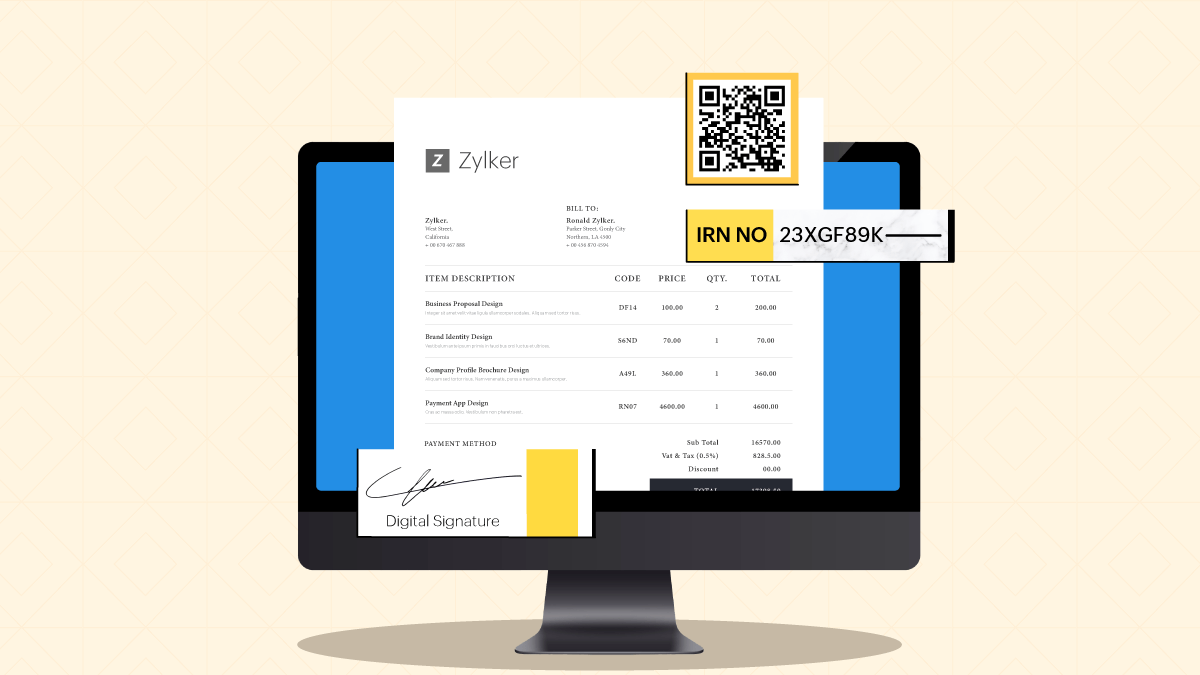- HOME
- Taxes & compliance
- Streamline your transactions with these important e-invoicing features
Streamline your transactions with these important e-invoicing features

Electronic invoicing, was introduced by the GST Council to simplify B2B invoice reporting for businesses. This was first targeted at business entities with a turnover of 500 crores, the threshold was then gradually reduced to accommodate smaller businesses as well. The implementation began in phases, with the target for businesses with 500 crore turnover from 1st October 2020. It was later expanded to include businesses with turnovers of 100 crores from 1st January 2021, then reduced to 50 crores from 1st April 2021, further brought down to 20 crores from 1st April 2022, then 10 crores from 1st October 2022, and finally 5 crores from 1st August 2023.
Invoice Reference Number (IRN)
Under the new e-invoicing system, the IRN can be defined as a unique number generated for invoices by the Invoice Registration Portal (IRP), and it is computed using a hash algorithm. This step ensures that the supplier does not submit the same document more than once within the financial year.
What is hash algorithm?
A hash algorithm is a function that converts a data string with alphanumeric characters into a string of numbers so that the original message remains encrypted.
What are the hash parameters?
The GSTN uses the following input parameters to generate the hash, which ultimately becomes the IRN.
These parameters are:
- Type of document (Invoice, credit note, debit note)
- Document number
- Supplier GSTIN
- Financial year
Generating the IRN
The IRP will generate the hash for a document using the input parameters submitted by the supplier. The IRP will send this information to the Central Registry of the GST system to check for duplicates. The hash value computed by the IRP will become the IRN for the document.
Digital Signature (DSC)
A digital signature is a method of electronically signing a document to authenticate that it has been submitted by the respective supplier. DSC should be created following the reference guidelines mentioned in the IT Act, 2000.
Before the new e-invoicing system was put into place, the GST rules required all invoices (including credit notes and debit notes) to be physically signed by the authorised individual issuing the document. Alternatively, they could also affix their digital signature provided that they fulfilled the required provisions under the IT Act, 2000.
What is the applicability of a DSC?
In the e-invoicing system, the invoice is submitted to the IRP has mandatory and optional parameters, and digital signature is one of the optional parameters. The JSON paymoad of the invoice will be validated and signed by the IRP using an IRP digital certificate. The signed e-invoice can be used by the seller as proof of their business transactions. The seller, while sharing the printed copy of the e-invoice, will have to separately share the QR code and the digital signature to the recipient.
How to attach a DSC to an invoice?
For this, you must have accounting software that generates the JSON data of the invoice. Your software should also have the capability to read a DSC, and you should also have the “emSigner” tool from GST up and running in your system.
Once the JSON payload of the invoice is generated using your accounting system, it will then be uploaded to IRP. When you click on the ‘Verify using DSC’ button, you will get a series of options to choose from the various digital signatures that are available. You can choose an appropriate and authorised signature and click ‘Sign’.
Quick Response Code (QR code)
A QR code can be defined as a two-dimensional code applied on items to allow machine readability. This is helpful for tax officers to check invoices using an offline application. QR codes will be created using the following parameters as inputs:
- GSTIN of supplier
- GSTIN of the recipient
- Invoice number given by the supplier
- Date of the invoice generation
- Invoice value
- Number of line items
- HSN code of the main item
- Unique IRN/Hash
The e-invoice schema declared by the GST Council demands that businesses print the QR code. Hence, all B2B taxpayers generating invoices will need to have QR code.
Takeaway
To start with, businesses that meet certain criteria will be able to generate compliant invoices using their accounting software. They will then go through the e-invoicing system where they will be assigned an IRN, DSC and QR code. The system will auto-populate certain fields on the return forms to avoid data entry errors. Taxpayers can match the unique IRN with the reported invoices to track them. Since the system allows the real-time upload of documents, there will be fewer fake invoices, and easier record-keeping and tracking. This will reduce instances of tax evasion.